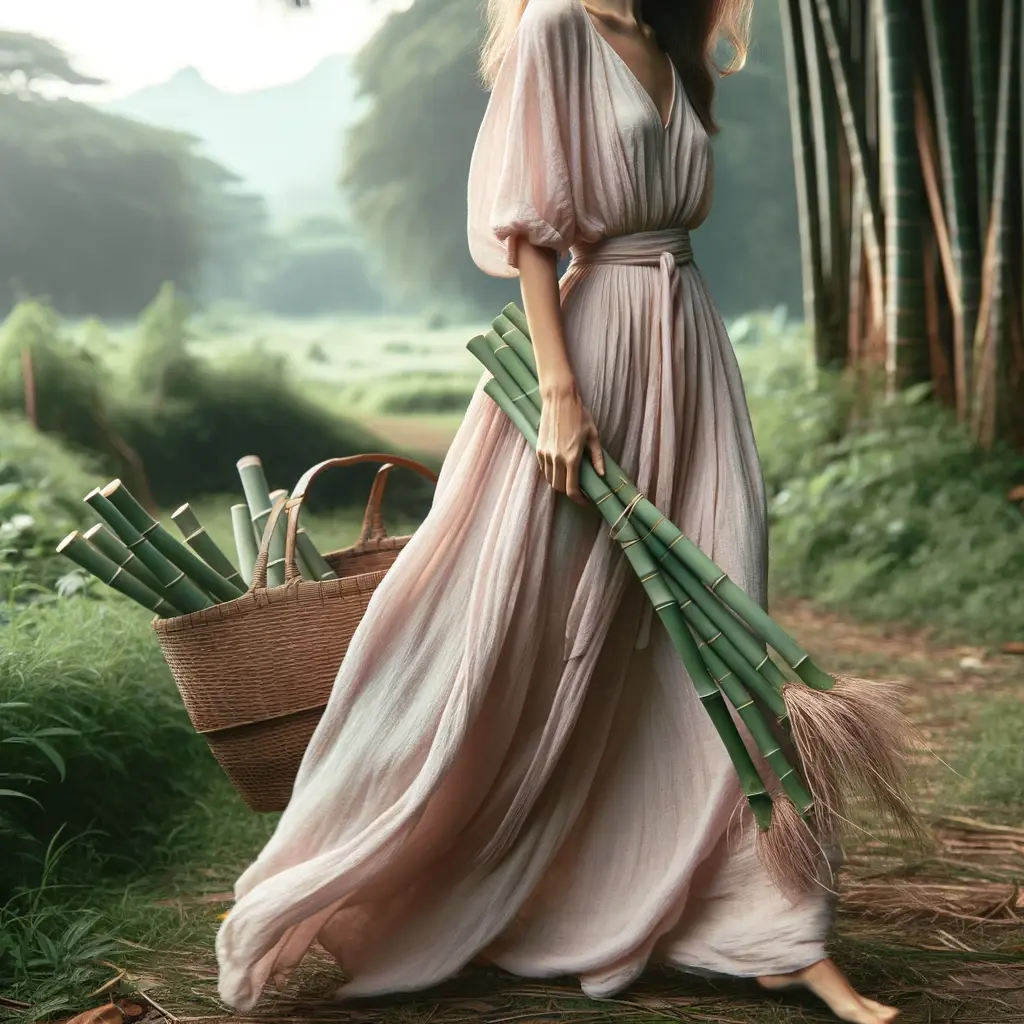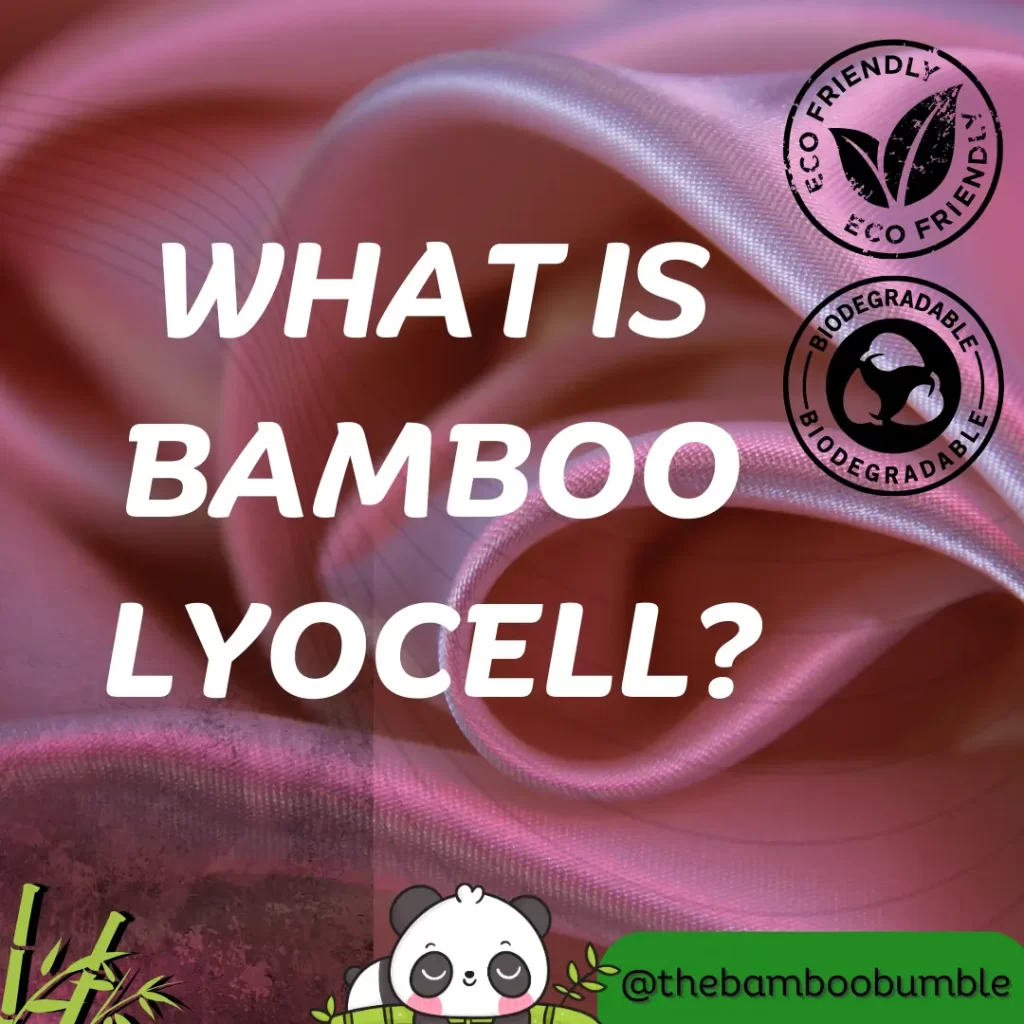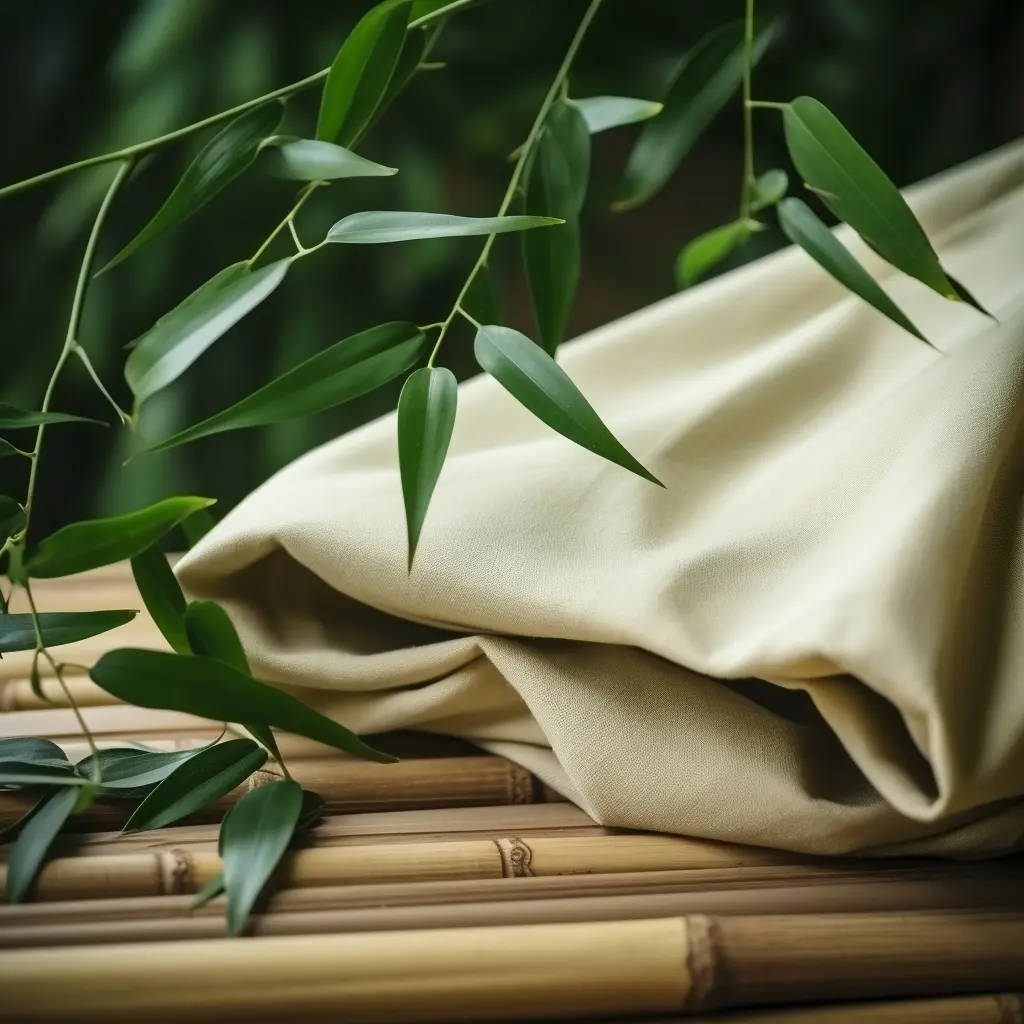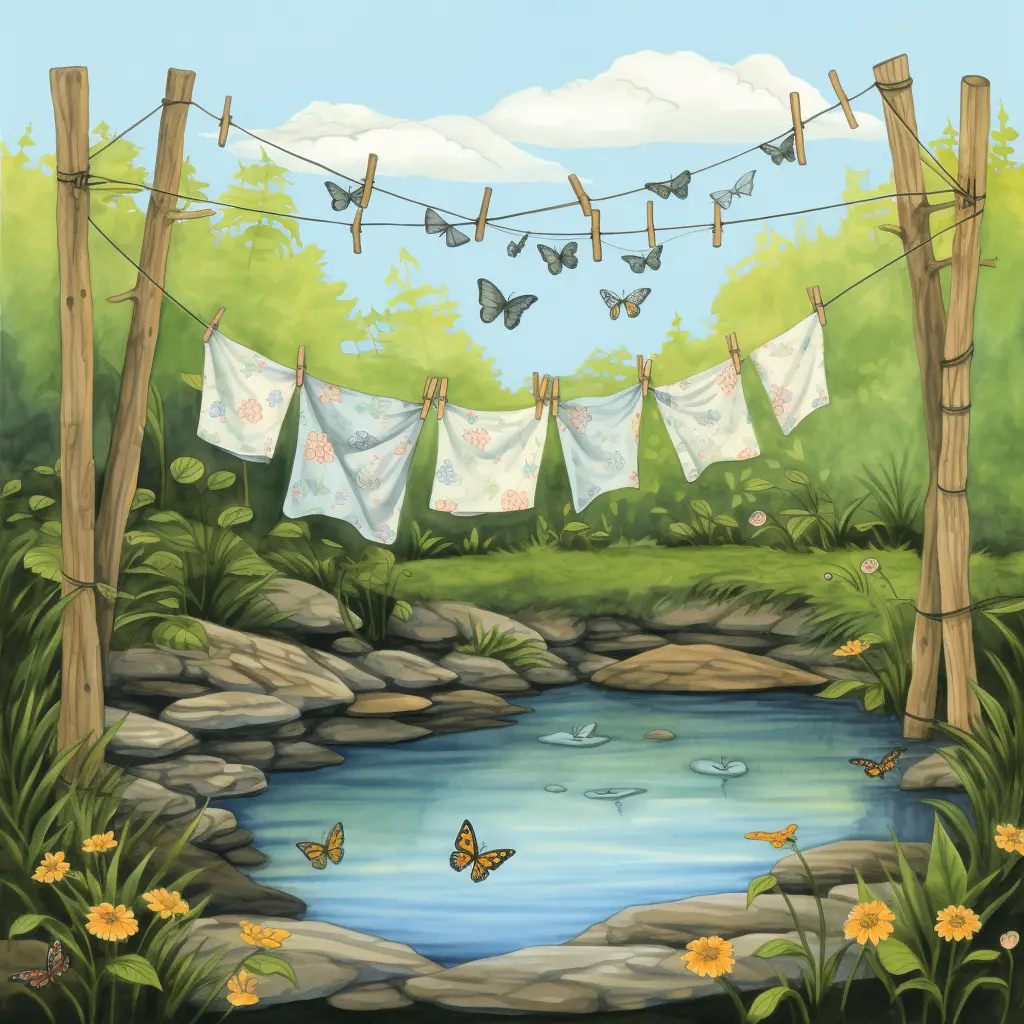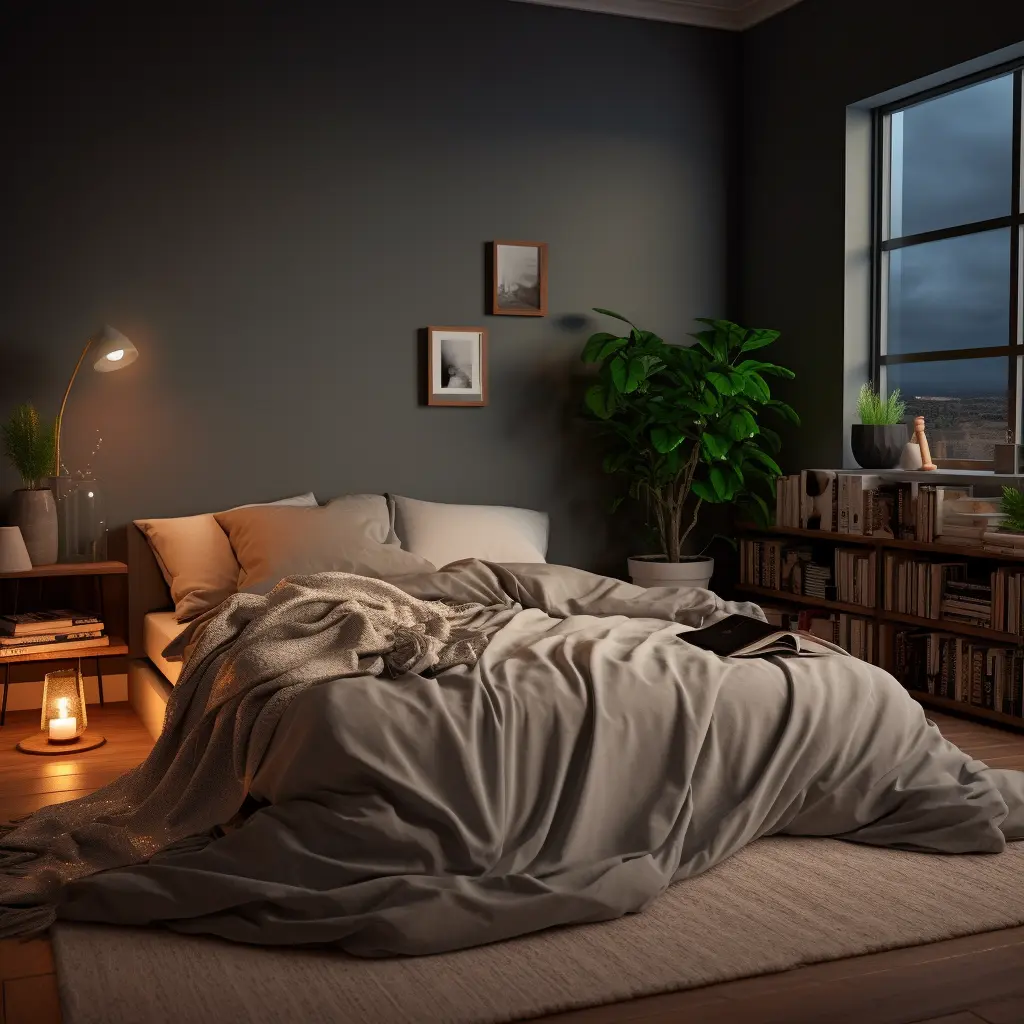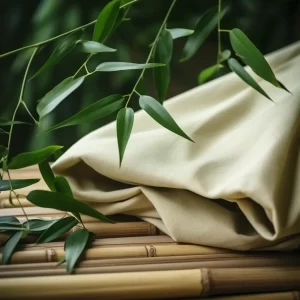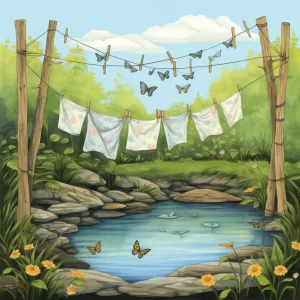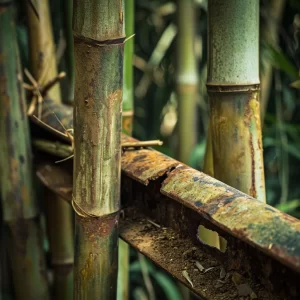Bamboo Baby Clothes Essentials: Your Ultimate Guide
Bamboo baby clothes – what’s the deal? Should you be considering them when looking to build out your little one’s wardrobe? Short answer – Yes! Why you ask? Let’s explore the benefits and advantages of why you want to bring these versatile clothes into the fold (pun intended) and the impact they can have on your, your family, and the environment.
- Eco-Conscious Baby Wear: Choose bamboo fabric for eco-friendly and comfortable baby clothing.
- Silky Softness: Bamboo fabric is exceptionally soft, akin to silk or high-quality cotton, ensuring a gentle touch on your baby’s skin.
- Eco-Friendly Production: Crafted through an environmentally responsible process, bamboo fabric has to potential to really reducing everyone’s ecological footprint.
- Gentle on Sensitive Skin: Bamboo fabric can be hypoallergenic and gentle, making it a perfect choice for babies with delicate and sensitive skin.
- Natural Antibacterial Properties: Bamboo can retain bamboo’s natural antibacterial properties depending on manufacturing process, ensuring a clean and healthy wear for your baby.
- Versatile for Baby Essentials: You can find bamboo fabric in a range of baby products, from clothing to bedding, making it a versatile and eco-friendly choice for your little one.
Bamboo baby wear offers numerous advantages that make it an excellent choice for your little one’s comfort and well-being. By choosing bamboo clothing, you’re not just opting for style but also embracing a host of benefits that serve your baby’s needs and contribute to a healthier environment. Here are the key takeaways:
Investing in Your Child’s Comfort and Future You’re investing in your child’s comfort and future, making a choice that’s kind and considerate to both their delicate skin and the world they will grow up in.
Table of Contents
Introduction to Bamboo Baby Wear
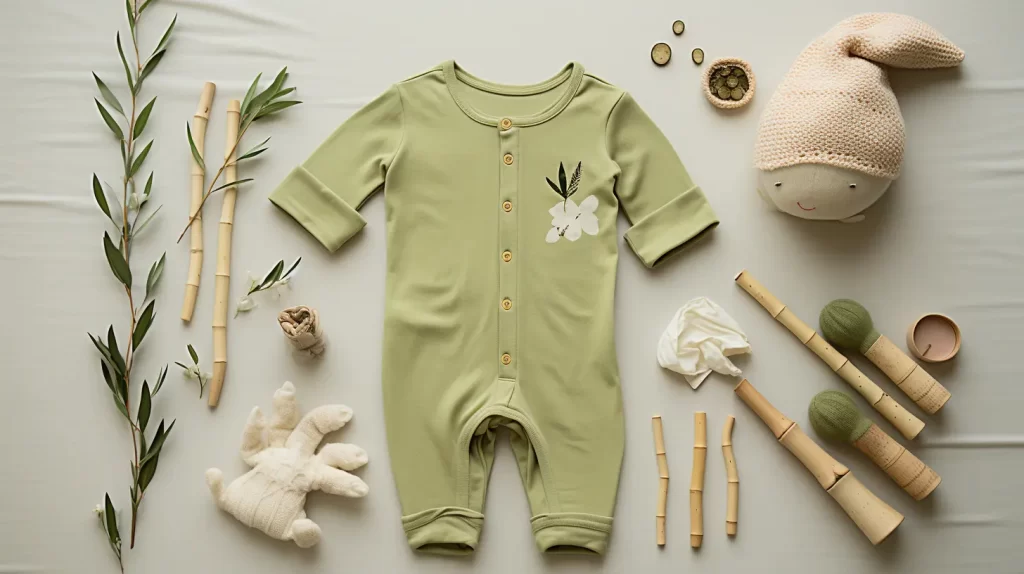
Do you know why bamboo fabric is becoming a go-to for baby clothes? Let’s explore the unique benefits of bamboo textiles and how they cater to your little one’s needs. We’ll also take a look at the current bamboo baby wear market to understand its growing popularity.
Why Bamboo Fabric for Baby Clothes?
Bamboo fabric’s natural softness and breathability make it an excellent choice for baby wear, ensuring your little one’s comfort throughout the day. If you’re dedicated to serving the needs of the youngest among us, you’ll appreciate the distinctive benefits of bamboo fabric:
- Comfortably Soft: Bamboo textiles offer exceptional softness, making them gentle on your baby’s skin.
- Elegant Style: Bamboo products provide a unique and stylish aesthetic to enhance your baby’s wardrobe.
- Impressively Durable: Bamboo is remarkably durable, with a high tensile strength, ensuring longevity.
- Remarkable Versatility: Bamboo is used for various baby essentials, from clothing to bedding and more.
- Naturally Hygienic: Bamboo possesses natural antibacterial and antifungal properties, ensuring hygiene.
- Sustainable Growth: Bamboo is a sustainable and rapidly renewable resource, reducing the carbon footprint.
- Eco-Conscious Biodegradability: Bamboo is eco-friendly and biodegradable, promoting a healthier planet.
While bamboo baby clothes might be a tad pricier, their durability and comfort can make them a worthwhile investment for those who prioritize quality and sustainability in their service to others.
Overview of Bamboo Baby Wear Market
As the global market for bamboo baby wear continues to flourish, parents are increasingly turning to these eco-friendly options for their little ones’ wardrobes. You’re part of a movement that’s seen the bamboo apparel market projected to grow at a steady CAGR (Compound Annual Growth Rate) of 6.0% up to 2032. It’s about more than just trends; it’s about serving the planet and the next generation with sustainable choices.
The softness, durability, and natural antibacterial properties of bamboo fabric are unmatched, making it ideal for your baby’s sensitive skin. While high costs of production pose challenges, the collective commitment to sustainability and environmental preservation is driving a robust market growth. By choosing bamboo baby wear, you’re contributing to a brighter, greener future for all children.
Additional Information Here: https://www.futuremarketinsights.com/reports/bamboo-apparel-market
Understanding Bamboo Fabric
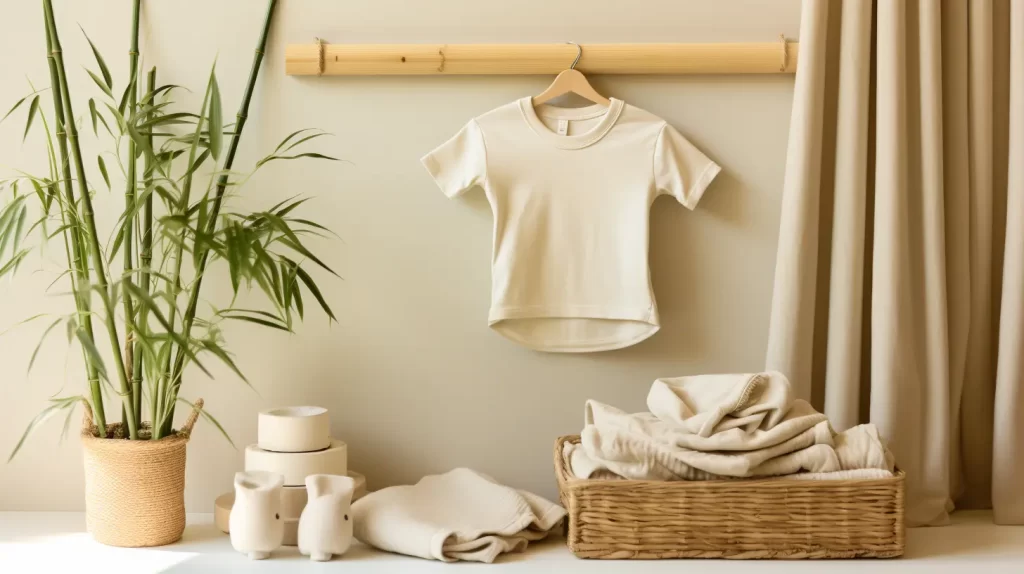
How is bamboo (believe it or not – a grass!) crafted into a fabric used to make clothing for the little ones? It’s important to differentiate between the types of bamboo fabrics available, as each offers unique benefits. Let’s explore the process of making bamboo fabric and the distinct characteristics that set each type apart for baby wear essentials.
The Process of Making Bamboo Fabric
Digging into the creation of bamboo fabric reveals a fascinating journey from plant to plush textile. As you’re committed to serving others, especially the little ones, understanding this process underscores your dedication to providing gentle, eco-friendly options. Here’s what you should know:
- Harvesting: Mature bamboo is harvested, ensuring sustainability due to its rapid growth.
- Pulping: The bamboo is broken down into a mushy substance, making the cellulose fibers accessible.
- Spinning: These fibers are then spun into threads, ready to be woven into fabric.
- Finishing: The resulting material undergoes treatments for softness and durability, ensuring it’s perfect for sensitive baby skin.
Each step is carried out with care, resulting in the soft, hypoallergenic fabric you trust for your bamboo baby wear essentials.
Different Types of Bamboo Fabrics
There’s two primary different kinds of bamboo fabric used to make products on the market. It’s important to review the exact process for each of the manufacturers as the environmental impact and finished product do really come down to how each of the different product makers approach manufacturing. Here are some general guidelines in comparing the different kinds of fabric.
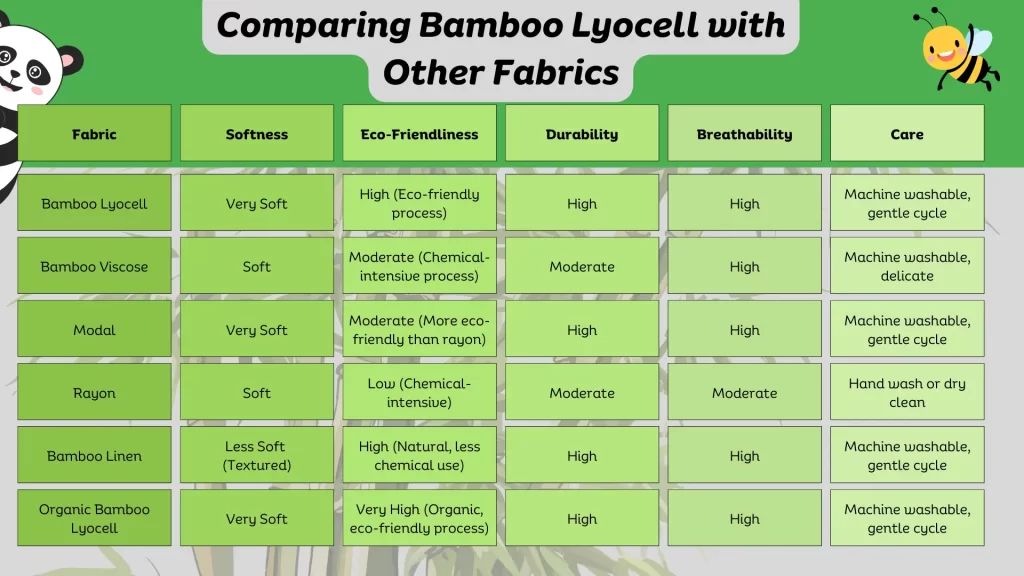
Process and Environmental Impact
Viscose (Rayon): This fabric is made by dissolving bamboo in a chemical solution to produce a pulpy substance, which is then spun into fibers. The viscose process often involves chemicals like carbon disulfide, sulfuric acid, and sodium hydroxide, which can be harmful to the environment if not properly managed.
Lyocell: This is a more modern and environmentally friendly method of producing fabric from bamboo. The process uses a closed-loop system that recycles almost all the chemicals used. Lyocell is made using a solvent called N-methylmorpholine N-oxide, which is less toxic and easier to reuse, making it a more eco-friendly option.
Texture and Durability
Viscose: Viscose fabrics are known for their softness, smoothness, and high absorbency. However, they can be less durable and may weaken when wet, leading to a shorter lifespan of the product.
Lyocell: Lyocell fabrics are also soft and smooth but are generally stronger and more durable than viscose. They have better moisture-wicking properties and are less prone to wrinkling. Lyocell is often praised for its durability and longevity.
Cost and Availability
Viscose: Generally, viscose is more widely available and less expensive than lyocell. This makes it a popular choice for a variety of clothing and household items.
Lyocell: Lyocell tends to be more expensive due to its more environmentally friendly and advanced manufacturing process. However, its durability can make it a more cost-effective option in the long run.
Suitability for Sensitive Skin
Viscose: While soft, viscose may not always be the best choice for sensitive skin, especially if chemicals used in its production are not thoroughly washed out.
Lyocell: Lyocell’s smoother fiber surface makes it more gentle on the skin. It’s often recommended for sensitive skin due to its natural breathability and moisture management.
In summary, while both viscose and lyocell are popular choices for bamboo fabrics, lyocell stands out for its environmental friendliness, durability, and suitability for sensitive skin, albeit at a higher cost. Viscose, while less expensive and widely available, has a greater environmental impact and may not offer the same level of durability and skin-friendliness.
Again, dig into each of your manufacturers before you decide on which direction to go. You have to choose what’s right for you and your baby!
Benefits of Bamboo Baby Clothes
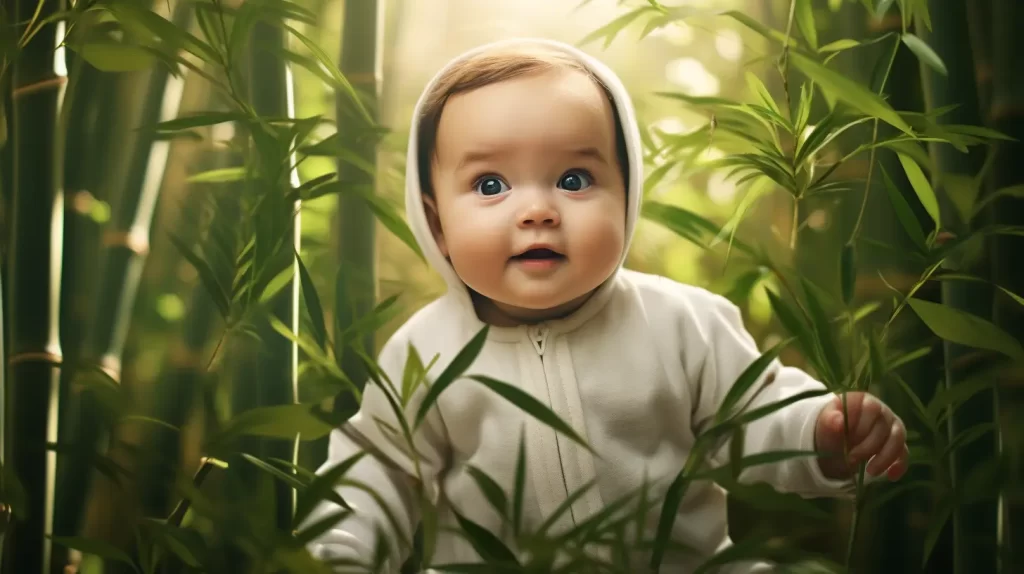
You’ll be amazed at how bamboo baby clothes can benefit your little one’s wardrobe. With their eco-friendly and sustainable nature, you’re not only making a choice that’s good for the planet but also for your baby’s skin. The natural antibacterial properties, coupled with the ability to regulate temperature, ensure your baby stays comfortable in any climate.
Eco-Friendly and Sustainable
Bamboo baby wear doesn’t just pamper your little one’s skin; it’s a stride toward a more sustainable future. As you consider the impact of your choices, know that by choosing bamboo, you’re contributing to a kinder planet for all children. Here’s why bamboo is an excellent eco-friendly option:
- Renewable Resource: Bamboo grows rapidly and doesn’t require pesticides or fertilizers, making it a super sustainable crop.
- Biodegradable: Unlike synthetic materials, bamboo clothing breaks down naturally, returning to the earth without harm.
- Water Conservation: Bamboo requires significantly less water to grow than cotton, preserving this vital resource.
- Carbon Absorption: As it grows, bamboo absorbs carbon dioxide, which helps to clean the air.
Natural Antibacterial Properties
While considering bamboo’s eco-friendliness, it’s also worth noting the material’s natural antibacterial properties that make it an ideal choice for baby wear. You’re not just choosing a sustainable option, but also one that serves your little one’s hygiene needs. The inherent bamboo kun in natural bamboo is believed to provide these antimicrobial properties, although they can vary based on the manufacturing process.
Choosing a lyocell bamboo fabric may offer more of these qualities than its viscose counterpart. Keep in mind, though, that the effectiveness of these properties may diminish with time and repeated washing. It’s essential to critically evaluate claims and understand that while bamboo fabric has potential antibacterial benefits, they’re not indefinite. Always strive to make informed choices as you serve the delicate needs of your baby.
Comfort and Suitability for Sensitive Skin
Beyond its eco-credentials, bamboo fabric is renowned for its softness and hypoallergenic qualities, making it exceptionally suitable for babies with sensitive skin. When you’re looking to swaddle your little one in comfort, bamboo baby wear offers several benefits:
- Gentle on the Skin: The fibers in bamboo fabric are naturally smooth and round, with no sharp spurs to irritate the skin.
- Thermo-Regulating: Keeps babies warm in winter and cool in summer, providing year-round comfort.
- Moisture-Wicking: Highly absorbent and wicks moisture away from the skin, helping to prevent diaper rash.
- Eco-Friendly: A sustainable choice that’s not only kind to your baby’s skin but also to the environment.
You’ll be providing the tender loving care your baby deserves while contributing to a healthier planet.
Thermal Regulating Features
Keeping your baby comfortable regardless of the temperature, bamboo baby wear’s thermal regulating properties ensure your little one stays cozy in the cold and cool during the heat. These garments adapt to their environment and your baby’s body needs, providing an excellent ventilation system. The moisture-wicking ability also keeps their skin dry, which is crucial for preventing irritation and ensuring comfort. It’s the kind of fabric that serves your child’s well-being, with a luxuriously soft texture that’s gentle against sensitive skin. While it’s true that bamboo fabric may require more delicate care and often comes with a higher price tag, its durability and the comfort it offers make it a worthwhile investment for your baby’s wardrobe, especially when prioritizing health and comfort.
Selecting Bamboo Baby Clothes
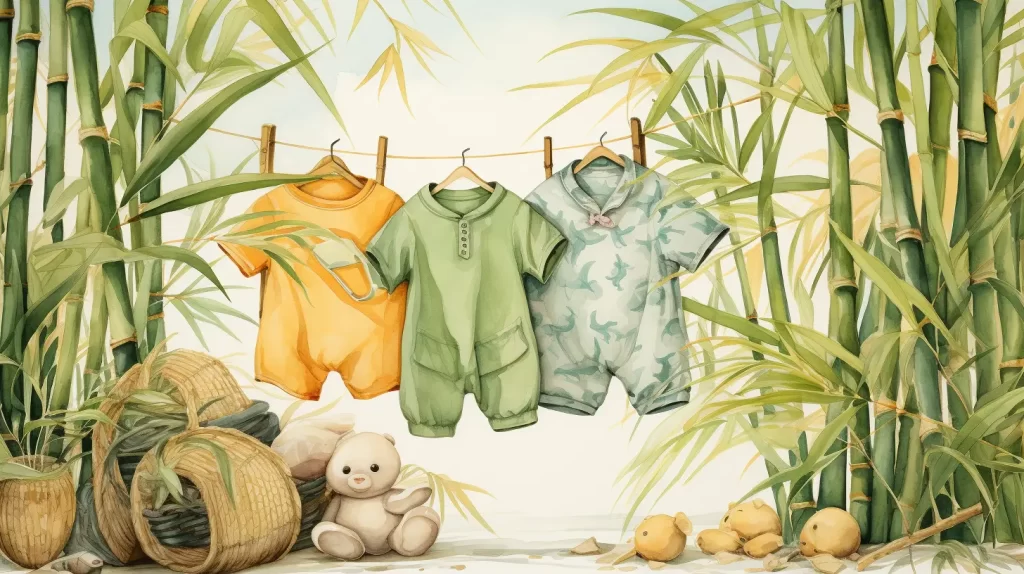
When you’re on the hunt for bamboo baby clothes, it’s crucial to know what makes for high-quality wear. You’ll want to ensure the pieces you pick not only fit well and accommodate growth but also reflect your little one’s budding style. Let’s explore how to choose the best garments that tick all these boxes.
What to Look for in Quality Bamboo Baby Wear
Selecting the right bamboo baby wear requires attention to comfort, safety, and durability. When you’re on the hunt for the best pieces for your little one, here’s what to keep in mind:
- Fabric Quality: Look for a smooth, soft texture that promises comfort against your baby’s sensitive skin.
- Safety Standards: Ensure the clothing meets safety regulations, free from harmful chemicals and designed with safe fastenings.
- Sustainable Practices: Opt for brands that prioritize eco-friendly processes, showing your commitment to the planet and future generations.
- Durability and Care: Check that the clothes are machine washable and can withstand frequent washes without losing their shape or softness.
Navigating Sizes and Fits
Understanding how bamboo baby wear is sized ensures you’ll find the perfect fit for your child’s comfort and growth. When selecting these eco-friendly garments, it’s essential to consider both the size and the fit. Bamboo fabric often offers a bit more give than traditional materials, so it can adapt to your baby’s shape and movements.
Start by checking the size chart provided by the manufacturer, as sizes can vary between brands. You’ll want to measure your baby’s height and weight to match the brand’s recommendations. Remember, babies grow quickly, so opting for a slightly larger size may be wise, giving them room to grow without sacrificing comfort. Pay attention to the garment’s cut too—snug-fitting bamboo clothes should still allow for easy movement and breathability.
Style and Design Considerations
After ensuring your baby’s new bamboo garments fit comfortably, you’ll want to consider the style and design that best suit your little one’s needs and your aesthetic preferences. When selecting bamboo baby clothes, here are some key elements to keep in mind:
- Ease of Dressing: Look for outfits with snaps and zippers that make changing quick and hassle-free.
- Functionality: Choose multi-functional pieces that can be mixed and matched for various occasions.
- Safety: Ensure there are no loose buttons or embellishments that could pose a choking hazard.
- Visual Appeal: Pick colors and patterns that you find delightful, remembering that your baby might also respond to certain hues.
Caring for Bamboo Baby Clothes
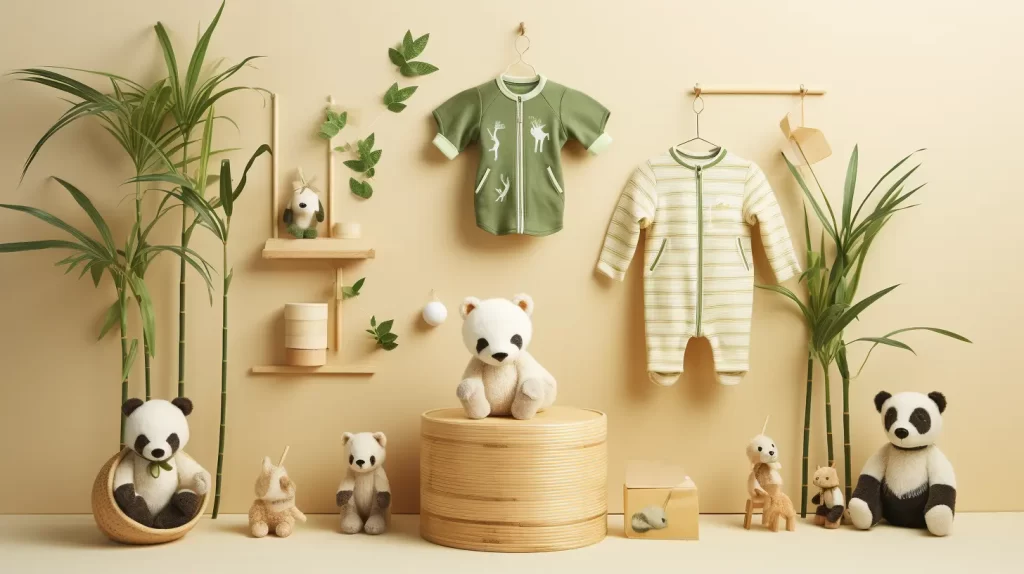
You’ve chosen the softest bamboo garments for your little one, but maintaining their softness and durability is key. From proper washing and drying techniques to effective stain removal, you’ll ensure these clothes last. Let’s explore how to care for them, store them correctly, and keep them looking as good as new.
Washing and Drying Tips
To maintain the softness and durability of bamboo baby clothes, it’s essential to follow specific washing and drying guidelines. These garments require tender care to ensure they remain gentle on your baby’s skin and stand the test of time. Here are a few pointers:
- Always wash bamboo clothes on a gentle cycle with cold water to prevent shrinkage.
- Use a mild, eco-friendly detergent that’s free from harsh chemicals.
- Skip the fabric softener and bleach; they’re tough on bamboo fibers.
- For drying, lay the clothes flat or hang them up, steering clear of direct sunlight and the dryer.
Stain Removal and Maintenance
When tackling stains on bamboo baby clothes, it’s important to act quickly and use a gentle, eco-friendly stain remover to maintain the fabric’s quality. Pre-treat any spots before they set in, considering the natural properties of bamboo fabric. Choose a mild, eco-conscious detergent that’s free from harsh chemicals like chlorine and bleach, ensuring you’re caring for both the garment and the environment.
During the wash, turn the clothes inside out and opt for a gentle cycle with cold water to protect the delicate fibers. For extra care, place the items in a mesh laundry bag. After washing, gently squeeze out excess water and air dry the clothes, steering clear of direct sunlight and the dryer to avoid shrinkage and fabric damage. Remember, your efforts in maintenance not only serve the longevity of the baby’s wardrobe but also contribute to sustainable living.
Storage and Longevity
Caring for your bamboo baby clothes goes beyond washing; proper storage is crucial for their longevity. After lovingly laundering these delicate items, ensure they’re kept in prime condition with these thoughtful storage tips:
- Lay garments flat or roll them to avoid creasing and to maintain shape.
- Use a cool, dry place for storage to prevent moisture damage and preserve the fabric’s softness.
- Avoid plastic containers; opt for natural fiber bags or baskets that allow the clothes to breathe.
- If using a closet or drawer, consider adding a natural deodorizer like baking soda or a sachet of dried lavender to keep clothes smelling fresh.
This is for sheets – but the same guidance applies!
Safety and Certification
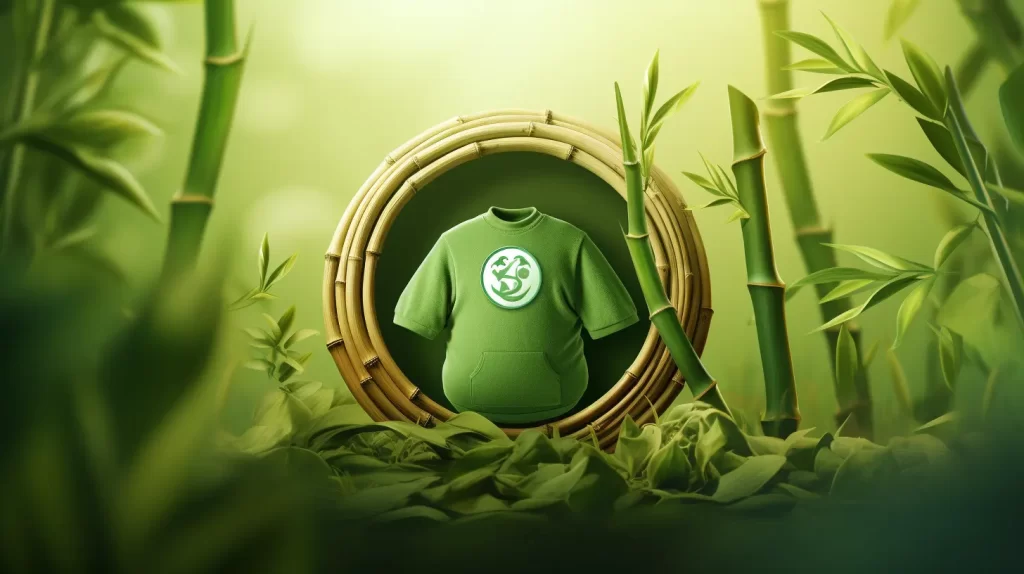
When you’re picking out bamboo baby clothes, it’s crucial to consider their safety and certification. You’ll want to ensure the fabrics meet specific standards and are hypoallergenic to protect your little one’s delicate skin. Keep an eye out for trusted certifications that guarantee the clothes are safe and free from harmful substances.
Understanding Certifications and Standards
As you choose bamboo baby wear, it’s crucial to look for certifications and standards that ensure the products are safe and ethically made. These certifications act as guardians of quality, affirming that the garments you select for the little ones are not only comfy but also responsibly crafted. Here’s what to keep an eye out for:
- OEKO-TEX Standard 100: Verifies that no harmful substances are present.
- Global Organic Textile Standard (GOTS): Ensures organic status and ethical production.
- Fair Trade: Indicates support for better working conditions and sustainability.
- ISO 9001: Denotes consistent, high-quality manufacturing processes.
Choosing Hypoallergenic and Safe Options
While understanding certifications is vital, it’s equally important to select hypoallergenic and safe bamboo baby wear to protect your little one’s delicate skin. You’re dedicated to providing the utmost care, so choosing clothing that minimizes the risk of allergic reactions is paramount. Look for bamboo fabrics that boast natural antibacterial properties and are free from harmful chemicals.
When you’re scouting for baby wear, check for labels like OEKO-TEX Standard 100, which ensures textiles are tested for substances that could harm health. Remember, your aim isn’t just to dress your baby in adorable outfits; it’s to envelop them in comfort, safety, and love. By opting for certified, skin-friendly bamboo garments, you’re actively shielding your infant from irritants, embodying the nurturing spirit that comes with caring for a precious new life.
Popular Bamboo Baby Clothing Items
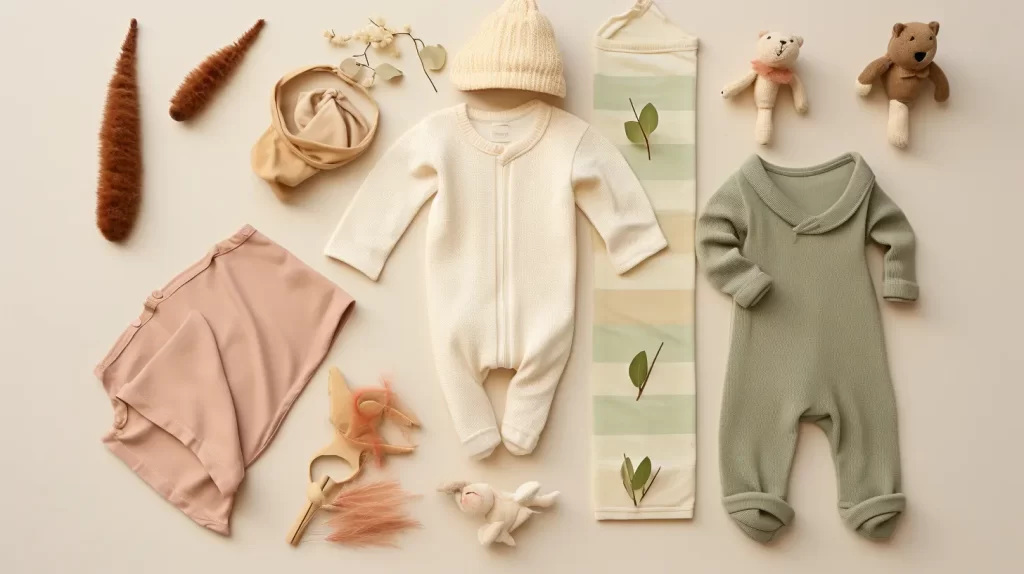
As you explore the world of bamboo baby wear, you’ll find some items are essential for your little one’s comfort and style. The market is bursting with innovative products, from snug onesies with clever double zippers to soft, stretchy pajamas that grow with your baby. Let’s take a closer look at these popular bamboo baby clothing items that parents are raving about.
Essential Bamboo Baby Wear Must-Haves
When outfitting your little one, bamboo baby wear essentials offer comfort, durability, and eco-friendliness, with onesies, swaddle blankets, and soft socks topping the list of must-haves. You’re not just picking out cute attire; you’re choosing items that will nurture and protect your baby’s delicate skin. Consider these indispensable pieces for your bambino’s wardrobe:
- Baby Clothing: Bamboo baby clothing, including onesies, pajamas, and rompers, is soft, breathable, and gentle on a baby’s skin.
- Swaddle Blankets: Bamboo swaddle blankets are lightweight, soft, and perfect for wrapping and comforting your baby.
- Bibs: Bamboo bibs are absorbent and easy to clean, helping to keep your baby dry during mealtime.
- Crib Sheets: Bamboo crib sheets are soft and hypoallergenic, providing a comfortable sleep environment for your baby.
- Burp Cloths: Bamboo burp cloths are highly absorbent and soft, making them ideal for cleaning up messes.
- Towels and Washcloths: Bamboo towels and washcloths are gentle on a baby’s sensitive skin and are super absorbent.
- Diapers: Bamboo diapers are eco-friendly and known for their softness and breathability.
- Changing Pad Covers: Bamboo changing pad covers are soft and durable, providing comfort during diaper changes.
- Baby Blankets: Bamboo baby blankets are lightweight, soft, and perfect for keeping your baby cozy.
- Teething Toys: Some baby teething toys are made from bamboo, providing a natural and safe option for teething babies.
- Baby Socks and Booties: Bamboo socks and booties are soft, breathable, and perfect for keeping your baby’s feet comfortable.
- Baby Carriers and Wraps: Some baby carriers and wraps feature bamboo fabric, offering comfort and breathability for both parent and baby.
- Nursing Pads: Bamboo nursing pads are soft, absorbent, and comfortable for breastfeeding mothers.
- Baby Bath Sets: Bamboo baby bath sets often include towels, washcloths, and bathrobes, providing a gentle and cozy post-bath experience.
- Stroller Blankets: Bamboo stroller blankets are lightweight and soft, perfect for keeping your baby warm during walks.
- Pajamas: Bamboo baby pajamas are comfortable and breathable, promoting a good night’s sleep.
- Baby Sleep Sacks: Bamboo sleep sacks provide a safe and cozy sleeping environment for your baby.
- Hats and Caps: Bamboo hats and caps protect your baby from the sun while keeping them cool and comfortable.
- Muslin Squares: Bamboo muslin squares are versatile and can be used as burp cloths, bibs, or lightweight blankets.
- Leggings: Bamboo leggings for babies are soft and stretchy, allowing for easy movement and comfort.
- Any many more!
Each piece serves a purpose, ensuring your baby is clothed in items that are as responsible as they are adorable.
The Future of Bamboo Baby Wear
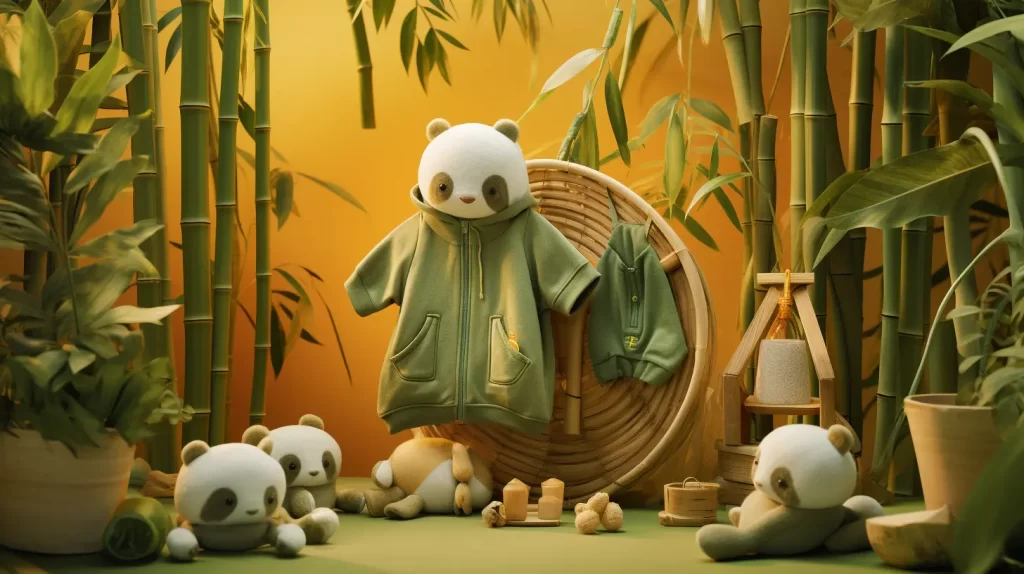
Looking ahead, you’ll see bamboo baby wear is not just a trend, but an evolving segment with great potential for growth. You’re likely to witness more innovative designs and advanced fabric technologies that enhance comfort and durability. As you explore this realm, consider how sustainability will play a central role in shaping the industry’s future.
Trends and Innovations in Bamboo Baby Clothes
As you explore the evolving world of bamboo baby wear, it’s clear that cutting-edge trends and innovations are shaping a more sustainable and comfortable future for infant fashion. These changes reflect a collective desire to provide the best for our little ones while caring for the planet they’ll inherit. Here are a few highlights:
- Thermal Regulating Fabrics: Bamboo materials that adapt to baby’s body temperature for all-day comfort.
- Antibacterial Properties: Naturally occurring elements in bamboo keep clothes fresher and cleaner.
- Eco-friendly Dyes: Use of organic and plant-based dyes to ensure safety and reduce environmental impact.
- Multi-functional Design: Outfits that grow with your baby, featuring adjustable sizes and versatile styles.
Sustainable Practices and Industry Outlook
Recognizing these advancements in bamboo baby wear, the industry is now focusing more on sustainable practices and what the future holds for eco-conscious parenting. You’re part of a growing community that values the planet as much as the wellbeing of little ones. By choosing bamboo baby wear, you’re supporting a movement that prioritizes renewable resources and ethical manufacturing. The industry outlook is bright, with innovations aimed at reducing water usage and carbon footprints, ensuring that the clothes you swaddle your baby in are as kind to the earth as they are to your child’s skin. As demand for these eco-friendly options rises, you’re not just dressing your baby; you’re nurturing a healthier future for all children.
Conclusion
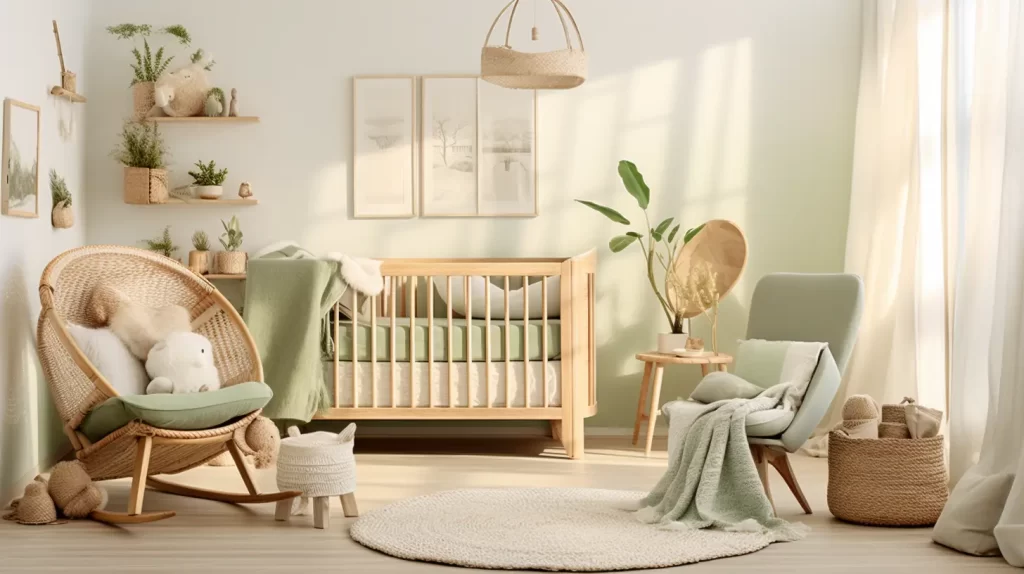
As you consider outfitting your little one, remember the numerous advantages bamboo fabric brings to the table. It’s clear that this eco-friendly choice offers comfort, durability, and sustainability, all wrapped up in one. Before making your next purchase, reflect on these final insights and recommendations to ensure you’re making the best decision for your baby’s wardrobe.

Bamboo FAQ
Q: What are the benefits of bamboo baby clothes?
A: Bamboo baby clothes are known for being soft, breathable, and hypoallergenic (depends on manufacturer and their process). They are also sustainable and eco-friendly, making them a great choice for your baby and the environment.
Q: Are bamboo baby clothes suitable for newborns?
A: Yes, bamboo baby clothes are perfect for newborns as they are gentle on their delicate skin and provide comfort for the little ones.
Q: Can I find bamboo baby pajamas in different sleeve lengths?
A: Yes, you can find bamboo baby pajamas in various sleeve lengths including long sleeve, short sleeve, and even sleeveless options.
Q: What is the most common fabric used for bamboo baby clothes?
A: The most common fabric used for bamboo baby clothes is bamboo viscose, known for its softness and breathability. Bamboo lyocell is the second most common fabric and has advantages over viscose in general. Check your manufacturer for details on their fabric and process.
Q: Do bamboo baby clothes come in different styles?
A: Yes, bamboo baby clothes come in a variety of styles including rompers, gowns, one-pieces, swaddles, and more, catering to different needs and preferences.
Q: Are bamboo baby clothes suitable for all seasons?
A: Bamboo baby clothes are versatile and suitable for all seasons, providing warmth in the winter and breathability in the summer. The wicking nature helps keep your baby dry and warm in both the summer and winter!
Q: What are some popular baby clothing brands that offer bamboo options?
A: Some popular baby clothing brands offering bamboo options include Little Sleepies, Posh Peanut, Kyte Baby, and Gerber, known for their premium and ultra-soft bamboo baby clothes.
Q: Can I find bamboo baby clothes in solid colors and prints?
A: Yes, bamboo baby clothes are available in a variety of solid colors as well as adorable prints, providing options for every style and preference.
Q: Are bamboo baby clothes available in different sizes?
A: Yes, bamboo baby clothes are available in a range of sizes from newborn to toddler, ensuring a perfect fit as your little one grows.

